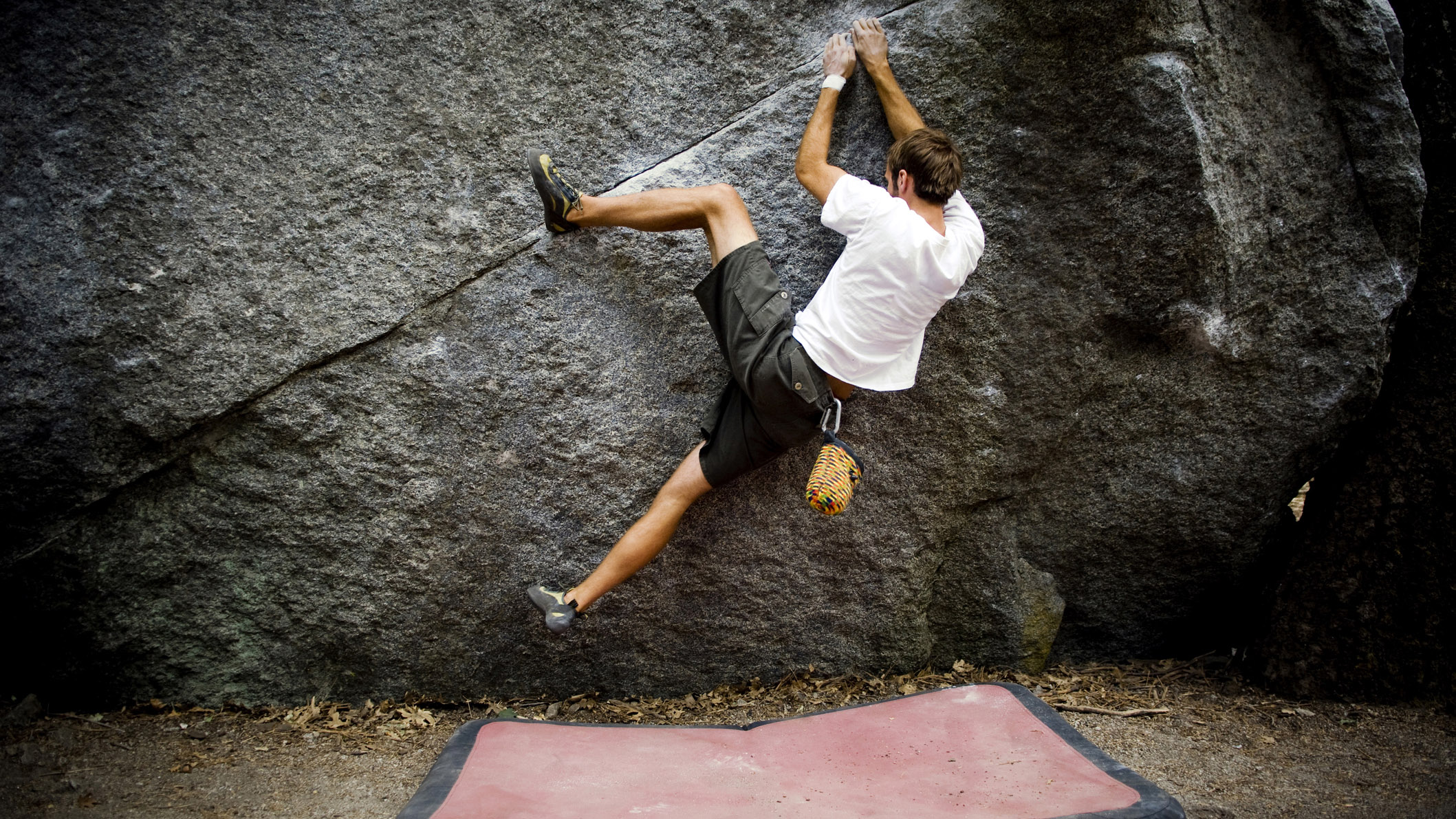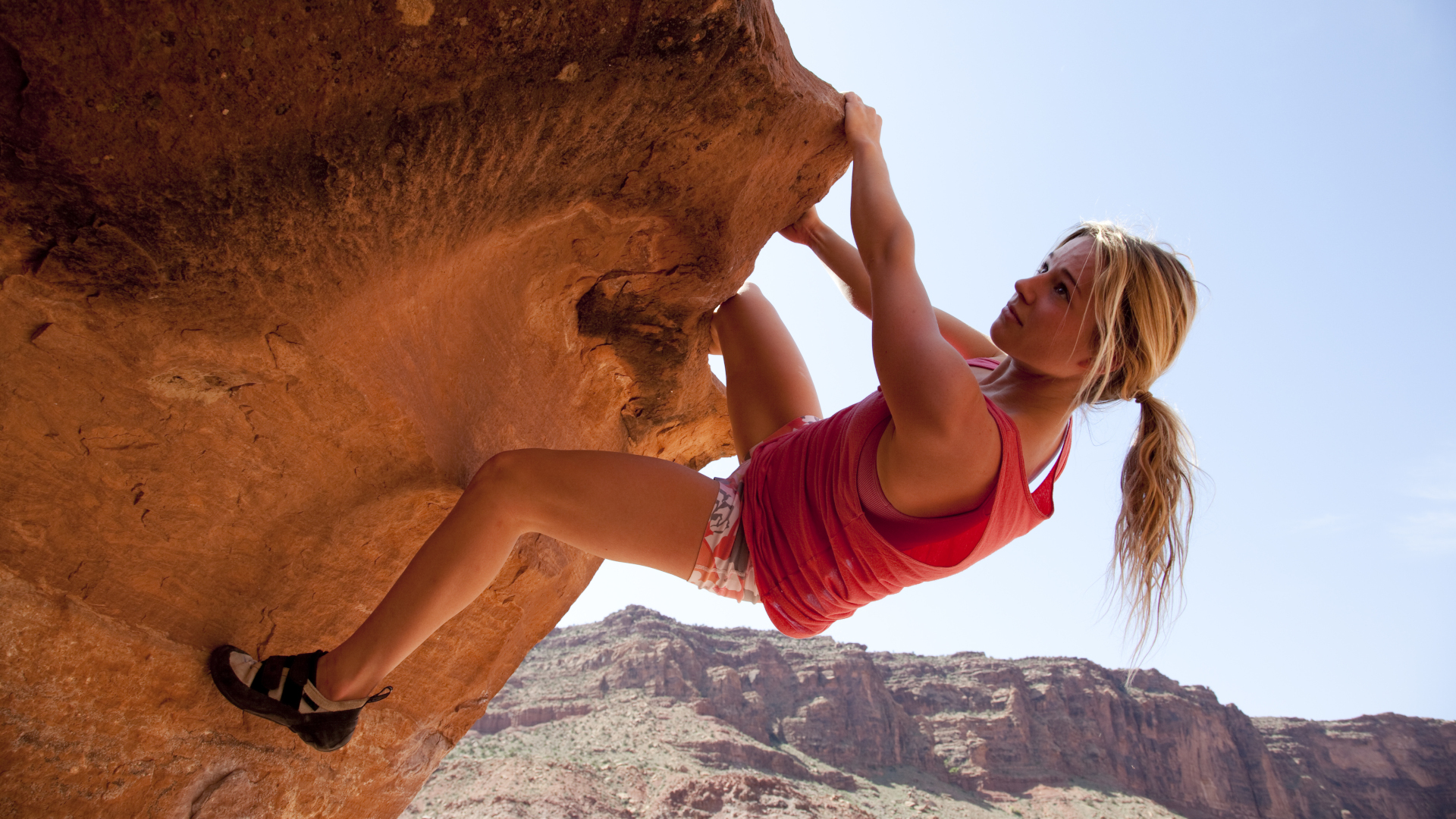What is a heel hook in climbing?
What is a heel hook in climbing? Get a leg up with this versatile technique to haul you up the wall or just give your arms a rest

Jugs, horns, underclings, slopers and pockets are just a few of the different climbing holds you can use to inch your way up the wall or crag, but sometimes what you really need is a third arm, right? Enter the heel hook. A heel hook in climbing is a well-used but skillful technique for getting some of the weight off your arms and sending some more advanced moves. Interested? Read on to learn how and when you can get a leg up on that tricky route.
What is a heel hook in climbing?
Essentially, a heel hook in rock climbing and bouldering is a technique where you lift a leg higher than (or level with) your torso, hook your heel onto a hold, then press your heel down into the rock and use your leg like a third arm to help haul yourself up the wall. The move has been around since the 1950s, but while it was initially a more rudimentary way of resting their arms, great climbers soon realized it could be employed to overcome problems and tricky moves. Not only does it give you a third arm, but once your heel is hooked, you can rely on the strength of your lower body (which is stronger than your arms) to pull you up.

When can you use a heel hook?
Heel hooks are often associated with sending overhangs, where just using your arms to essentially do a pullup takes a ton of strength (or being Tom Cruise). However, with the right amount of precision, you can definitely use a heel hook on a sloper, and if you’re really confident, on a crimp. A heel hook can also be a really effective tool for hugging your body weight closer to the wall. Basically anywhere that you need a third arm, or more strength than your upper body can provide, you can use a heel hook.

What do you need to do a heel hook?
A heel hook might sound simple, and it certainly looks impressive, but before you go flinging your heel up and tearing a hamstring, there are a few things you need to know.
First, you need to make sure your climbing shoes fit properly. Even the best climbing shoes won’t do you any good if they’re slightly too big, because as soon as you press your heel down, your shoe will come off and you’ll slip. So if you’re newer to climbing and you’ve gone for comfort around the toe box, remember your next pair of shoes need to be snug, but not too tight.
Where your shoes need to be tight, however, your hips and hamstrings will need to be loose. If this is the style of climbing you want to do, we can’t think of any better argument for regularly practicing yoga for rock climbing. To do a heel look, you need to be able to lift your leg higher than your hip while your hip is in external rotation, then straighten your leg at the knee. This requires strong hip flexors and quads, plus good hip and hamstring mobility. Without hurting yourself, try the maneuver now and see how far you get. If you’re nowhere close, get yourself to some yoga and pilates lessons and focus on active stretching to improve your mobility – it will help your climbing in more ways than one.
That said, mobility isn’t everything. You need a high degree of precision to get your heel where you want it, and once it’s hooked you need to be able to pull down. Both of these things require good muscle strength and control, especially in your core muscles, hip flexors, quads, glutes and hamstrings, so don’t miss leg day at the gym and check out these yoga poses for leg strength.
Advnture Newsletter
All the latest inspiration, tips and guides to help you plan your next Advnture!
When you get to the climbing wall, make sure you warm up before you attempt such a move, and practice it on some easier moves on an indoor wall where you’re starting from a really stable position before you try any crimps climbing outdoors.
- Best women's climbing shoes: for indoor climbs and mountain adventures
Julia Clarke is a staff writer for Advnture.com and the author of the book Restorative Yoga for Beginners. She loves to explore mountains on foot, bike, skis and belay and then recover on the the yoga mat. Julia graduated with a degree in journalism in 2004 and spent eight years working as a radio presenter in Kansas City, Vermont, Boston and New York City before discovering the joys of the Rocky Mountains. She then detoured west to Colorado and enjoyed 11 years teaching yoga in Vail before returning to her hometown of Glasgow, Scotland in 2020 to focus on family and writing.

